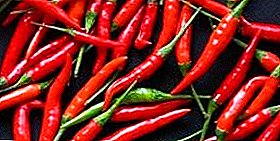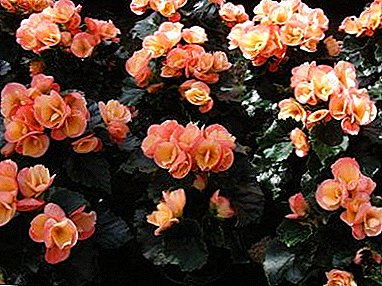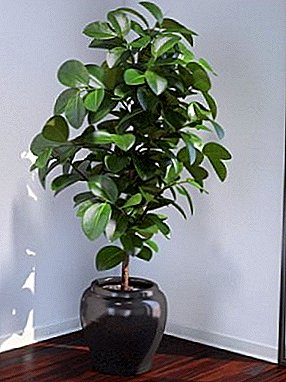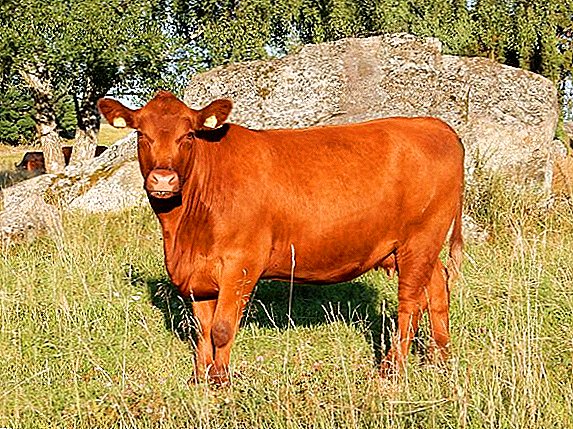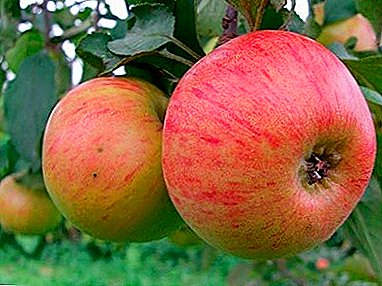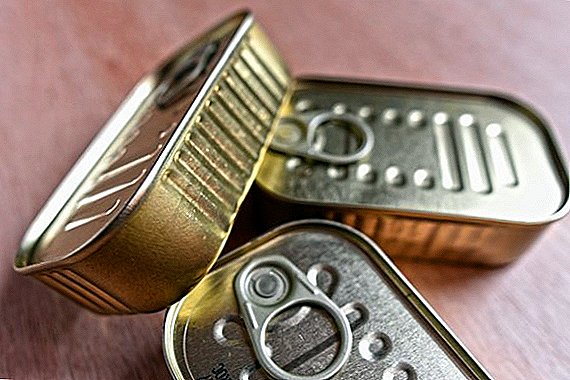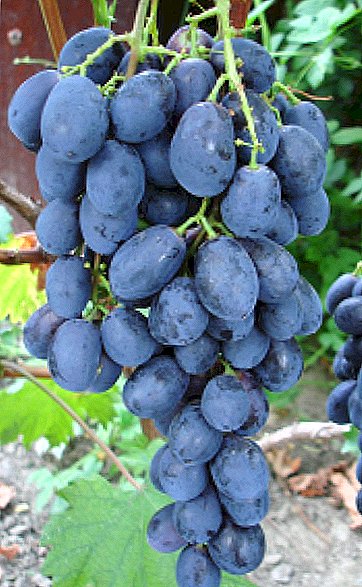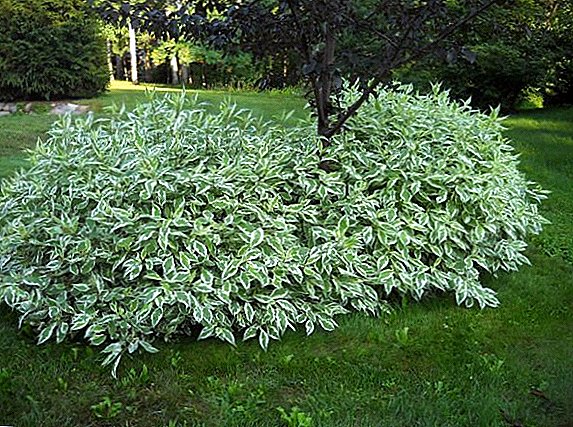 Derain white - beautiful ornamental shrub, which gives a beautiful view of the garden at any time of the year. It decorates the site with numerous bright inflorescences, and after flowering the bush becomes covered with white or white-blue berries.
Derain white - beautiful ornamental shrub, which gives a beautiful view of the garden at any time of the year. It decorates the site with numerous bright inflorescences, and after flowering the bush becomes covered with white or white-blue berries.
In autumn, its leaves turn purple, and in winter, red branches look amazing on white snow. Therefore, it is often used to form a hedge in the area.
Landing features
It is believed that Deren - a plant unpretentious. It is easy to plant and care for him, and even a novice gardener can handle it.
Landing dates
 Most often practiced planting sod in the fall. It is advisable to do this before the onset of cold weather, so that the plant has time to harden and settle into the new soil. After wintering, in spring such seedlings start growing faster, since they had already passed the period of adaptation in the autumn.
Most often practiced planting sod in the fall. It is advisable to do this before the onset of cold weather, so that the plant has time to harden and settle into the new soil. After wintering, in spring such seedlings start growing faster, since they had already passed the period of adaptation in the autumn.
However, you can plant shrubs and spring. In this case, it is immersed in the earth with a lump of earth on the root system. This will save the roots from damage and help the plant take root in a new place.
Although gardeners consider: it does not matter when the sod was planted, in spring or autumn it does not affect the development of the shrub.
Selection and preparation of planting material
Having decided to buy sod saplings, it is enough to contact a specialized store or garden center. But you need to be careful when choosing planting material, in order to purchase exactly the sort of white turf.
Did you know? Derain refers to the family of dogwood. There are many varieties of this shrub, but not all are suitable for growing in our climate in open ground. Derain white is a large shrub with brownish-red or just brown, red, flexible branches. Also has names: reddish, white cornel, white svidina.
 Today we sell a huge number of different varieties of sod. You can offer stunning beauty of the bushes with leaves amazing color, but they are unlikely to survive our winter. If you are looking for an unpretentious perennial, take only the white variety, because it is winter-hardy.
Today we sell a huge number of different varieties of sod. You can offer stunning beauty of the bushes with leaves amazing color, but they are unlikely to survive our winter. If you are looking for an unpretentious perennial, take only the white variety, because it is winter-hardy.
Among the most popular and proven varieties of white turf called:
- Elegant light - has elongated leaves with a bright border, small creamy inflorescences, dark red branches.
- Derain white Siberian variety - has spotted leaves, bright red branches, cream flowers, which are replaced by white berries, the leaves become red by autumn.
- Aurea - characterized by white berries and yellow leaves.
- Shpet - cream inflorescences are replaced with white berries, in winter the branches are bright red, the leaves are yellow-green spotted.
- Kesselring - considered the most winter-hardy. Differs dark red branches, reddish leaves and white berries.
Before purchasing, carefully inspect each seedling from root to tip to take a healthy plant without diseases and pests.
Selection and preparation of a landing site
Having decided to plant this plant, it is necessary to decide where to plant the deren. It grows well both in shade and in partial shade - it is not very demanding of sunlight.
 Therefore, they are most often decorated with fences, blank walls, large trees. In particular, the bush with spotty leaves against the background of coniferous trees looks beautiful. But still, it’s not worth getting involved in and planting him in a strong shade - he may lose his decorative effect.
Therefore, they are most often decorated with fences, blank walls, large trees. In particular, the bush with spotty leaves against the background of coniferous trees looks beautiful. But still, it’s not worth getting involved in and planting him in a strong shade - he may lose his decorative effect.
Unsophisticated turf and to the soil. If it has normal acidity, the composition of the soil does not matter. It is well rooted both in light sandstone and in heavy loam, it also grows well in stony, calcareous soil.
But if you want beautiful foliage and lush shoots, complex fertilizer or humus should be applied to the wells before planting. Also worth periodically feed up. Thanks to mineral fertilizers, healthy shoots and beautiful foliage develop on the bush. But without supplements the shrub is quite decorative.
Derain likes to live in wet areas: on the shores of lakes, rivers. Accordingly, on your site, too, pick a place closer to the water or where the groundwater is close. Nearby it is necessary to plant those plants that love abundant watering. In the summer it is watered at least once a week. The rest of the time you can not do special irrigation.
Step-by-step procedure for planting seedlings
So, you have decided where to plant shrubs. How to properly plant sod saplings?
- Dig a hole that will be slightly larger in size than an earthen ball on a seedling.
- Pour into it a mixture of nutrients: mineral supplements, leaf earth, humus. In one place, Derain can grow up to 25 years, so it is important to feed it well initially, and then periodically feed it.
- Well before planting must be watered well, so that all its contents are compacted.
- Before planting, the seedling itself must also be watered and wait 10-15 minutes for the soil to soak in moisture.
- Then it is carefully placed in the hole, trying to harm the root system as little as possible.
- Now the hole can be sprinkled with earth, rammed and generously watered.

White turf care
Care is needed very little, but if you want to get a beautiful and lush bush, you must adhere to the basic rules of its cultivation. How fast the white turf grows depends on the plant variety.
Watering and loosening the soil
 If you plant a turf in the right place, that is, in partial shade in a fairly moist soil, then it does not require special watering. In the spring and autumn it has enough natural precipitation. In summer, in extreme heat, it can be watered once a week so that the ground under the bush does not dry out. In this case, no more than two buckets of water are poured under each adult bush.
If you plant a turf in the right place, that is, in partial shade in a fairly moist soil, then it does not require special watering. In the spring and autumn it has enough natural precipitation. In summer, in extreme heat, it can be watered once a week so that the ground under the bush does not dry out. In this case, no more than two buckets of water are poured under each adult bush.
Young bush requires periodic loosening of the soil and its mulching with peat or humus. Use also chips or small bark of trees.
Fertilizer and dressing bushes
Intensive turf feeding is not required. As already mentioned, he feels good on any soil. But if you want to get a beautiful bush, it is advisable to periodically feed it with mineral complex fertilizers once in spring.
This will be enough for the plant to recover after wintering and get everything necessary for intensive development. In the summer, you can spend additional feeding with compost or peat - about 150 g per bush.
Important! During the season, the plant has two peaks of flowering. The first is in May - June, and the second - August - September. During flowering shrub covered with corymbose inflorescences cream or white. Separate inflorescences can also appear in the inter-peak period.
Trimming and trimming sod bushes
Some sorts of turf for a season can stretch by 50-60 cm, which will not look very attractive. Therefore, it is recommended to cut and trim the white turf. Pruned it in the spring, removing the old shoots, so that they do not interfere with growing young. It is recommended to leave at the same time 15-20 cm old escape above ground level.
Do not forget to process the cuts with ashes or crushed activated carbon, so that infection does not get into the plant and the healing process takes place faster. Some gardeners recommend pruning the sod in the fall so as not to disturb the shrub in the spring.
But the plant is kept in the garden for the beautiful branches that decorate the garden in winter. After the autumn pruning there will be nothing to please the eye.
As for the haircut, then it is carried out for the season two or three times, with the last time shortened shoots in late July. Until that time, the shrub develops very intensively, but grows chaotically. If you need aesthetics in the garden, you can give it the desired shape.
Preparation of young white turf seedlings for winter
If the white turf grows on your site, you will not need any special manipulations to prepare it for wintering. This variety tolerates frost. If you expect a harsh winter, you can slightly cover the roots with any material for shelter. For the rest of the time, it is enough to pack a snow pillow around them.
 If the cultivation of turf takes place in a very harsh climate or you decide to cultivate plants with low resistance to frost, it is advisable to remove young shoots for the winter. To do this, they are carefully dug, dipped in the basement and stored there until early spring. As soon as it gets warmer, the seedlings return to their former place.
If the cultivation of turf takes place in a very harsh climate or you decide to cultivate plants with low resistance to frost, it is advisable to remove young shoots for the winter. To do this, they are carefully dug, dipped in the basement and stored there until early spring. As soon as it gets warmer, the seedlings return to their former place.
Did you know? Derain in the Latin version has the name Cornus, which means "horn". The name is not accidental, since its heavy and durable wood really resembles a horn in density.
Ways to breed white turf
There are several ways to breed white sod. Both seeds and cuttings are suitable for planting, but you can also use branches from the bush.
Cuttings
Cuttings, that is, young shoots of turf, can be removed every year. But not any branch cut from it will be a good planting material. For this one should choose shoots with 7-9 strong and healthy buds. Another important question: when to cut the white turf. The best time for this is considered spring and autumn.
 Cutting in spring cuttings is recommended to be first treated with a weak solution of succinic acid, which will improve their current state and development in the future. They are then placed in a nutrient container and placed in a greenhouse or greenhouse.
Cutting in spring cuttings is recommended to be first treated with a weak solution of succinic acid, which will improve their current state and development in the future. They are then placed in a nutrient container and placed in a greenhouse or greenhouse.
During the summer, watching the development of cuttings: all the buds on them should open up and give new leaves. During the summer season, cuttings are regularly watered and fed with mineral complexes or organic fertilizers. By the fall, healthy seedlings with a strong root system should grow from cuttings.
Saplings can be removed from the bush in the spring, cutting them from the roots. This is done around the end of April or the beginning of May. The bush is dug out completely or bare part of it.
Then choose the rhizome, which formed the young shoots - the old breeding is not suitable. The rhizome is released from the ground and cut off the desired part with a sharp disinfected instrument.
Separated seedlings are placed in pre-prepared wells, dug at a distance of 25 cm from each other. In each of them there should be a nutrient mixture and organic fertilizers that will help the plant take root in a new place, increase new stems and roots.
If the correct shoots have been chosen, the plant will take root and take root very quickly.
Layering
 Since the bush has a spreading and dense crown, the branches of which are easily bent to the ground, it can be propagated by layering. Although independently so to share the bush is not able to.
Since the bush has a spreading and dense crown, the branches of which are easily bent to the ground, it can be propagated by layering. Although independently so to share the bush is not able to.
Layers form in spring, when a young long branch is selected, it bends down to the ground and buries itself in it. Since she herself will not hold in the ground, it is recommended to fix it with iron brackets.
The place where the branch was prikopana, is mulched, which will allow to concentrate the greatest amount of nutrients in it. All summer it must be watered and periodically fed.
In the spring or autumn of next year, there will already be enough roots on the branch for it to live an independent life. It must be carefully separated from the parent bush and transplanted to the right place. Although the method is relatively simple, it is rarely used by gardeners.
Seeds
After flowering, at the beginning of summer, white or purple seed balls are formed in the place of turf flowers. During summer sunny days the seeds ripen and are suitable for harvesting only in the fall. For this you need to collect balls, remove seed from them and dry.
 The quality and germination of seeds depends on the proper care of the bush during the summer. If he was not ill with anything, was not attacked by pests, was watered and fed in time, they would have 100% germination rate.
The quality and germination of seeds depends on the proper care of the bush during the summer. If he was not ill with anything, was not attacked by pests, was watered and fed in time, they would have 100% germination rate.
Sowing of turf seeds in open ground is carried out in the fall immediately after harvest, approximately in October. At this time, the air is not so warm, and the ground is already periodically freezing at night. Such conditions will help harden the seeds in the spring. If you decide to sow them in the spring, first preserve them at temperatures below 5 ° C.
Derain white in landscape design
White turf very readily used to decorate gardens and personal plots. It looks especially good on the slopes, as a hedge, in combination with other bushes or in mixed flower beds. Planting turf in the garden as an ornamental plant, keep in mind that its berries are very attracted to different birds.
Resistance to pests and diseases
Adult matured bush resistant to most diseases. For this and love to grow white turf. But while he grows up, young shoots may appear. powdery mildew - A fungal disease that affects almost all garden plants.
The period of infection is spring. At this time, spores that settle on the lower parts of the plant stand out from the overgrown remains of the fungus in the ground. Powdery mildew begins to spread from the lower leaves of the shoot, gradually reaching its tops.
 The leaves are covered with a whitish bloom, on which later a liquid appears, and brownish balls begin to form on the branches. The fungus itself feeds on the sap of the plant, so over time it ceases to bloom, fades, dries out and dies.
The leaves are covered with a whitish bloom, on which later a liquid appears, and brownish balls begin to form on the branches. The fungus itself feeds on the sap of the plant, so over time it ceases to bloom, fades, dries out and dies.
Optimal conditions for the occurrence of powdery mildew are sudden temperature changes with long dry periods and too abundant watering with nitrogen fertilizers. Pruning at the root also weakens the plant, making it vulnerable to various diseases.
Therefore, to prevent powdery mildew, should be planted bushes far enough from each other, so that the roots have room for development. In spring and autumn, the root system is slightly thinned.
During watering, water is poured directly under the root so that water does not fall on the plant itself. In the autumn, from the flower bed, it is necessary to remove all remnants of leaves and grass so that the mushrooms could not spend the winter there.
If the first signs of the disease are found, the affected branches should be cut and burned. The bush should be sprayed with any disinfecting solution or decoction. For example, a soap solution of soda ash or decoction of horsetail.
A good way is to sprinkle with a decoction of garlic. To do this, three tablespoons of crushed teeth are brewed in a bucket of water, cooled and the plant is sprayed with decoction.
 Turf pests are no less dangerous. Most common comma-shaped shield. This insect loves to nibble on the leaves of a plant. The female has dimensions up to 1.5 mm, and the male - 0.5 mm. Females are covered with a shield, under which eggs are kept during wintering on the trunks of the bushes.
Turf pests are no less dangerous. Most common comma-shaped shield. This insect loves to nibble on the leaves of a plant. The female has dimensions up to 1.5 mm, and the male - 0.5 mm. Females are covered with a shield, under which eggs are kept during wintering on the trunks of the bushes.
At temperatures below -30 ° C eggs die. If they are not dead, then in April the larvae begin to emerge, which attach themselves to the trunks and leaves, thickly covered with white threads.
After two months, females emerge from them, which within a month devour the entire bush, increasing 2.5 times. Having laid eggs under the shell, they die off. For eggs to fertilize, males are needed, which are born quite rarely, and the eggs themselves become food for ticks, bedbugs, and spiders.
Get rid from this pest you can, having treated the bushes with insecticides (Decis, Kinmiks, Karbofos) during the exit from under the scutes of the larvae.
Another common turf pest is aphid. It usually settles on the underside of leaves, flower buds, sometimes on the stems. It has an oblong body up to 2 mm, long legs and sometimes wings.
After fertilization, females lay up to 150 larvae, and they can do this several times. Often colonies of aphids "graze" ants, collecting from it a sweet liquid, which the aphid produces, absorbing the plant sap. From aphids helps spraying solutions of brown soap, celandine, garlic, needles, tobacco or onions.
 Although various pests and diseases can attack Deren, the complete extinction of a bush rarely occurs. Usually, the very first emergency measures yield a result, and with proper prevention, their use will not be required at all. In general, white turf is a great plant for the garden, which is suitable even for those who can not devote much time to caring for the site.
Although various pests and diseases can attack Deren, the complete extinction of a bush rarely occurs. Usually, the very first emergency measures yield a result, and with proper prevention, their use will not be required at all. In general, white turf is a great plant for the garden, which is suitable even for those who can not devote much time to caring for the site.


